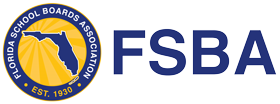Large or small, every school board should hold an orientation for new board members because it benefits the organization, including the scope of people it serves. All boards have a unique set of dynamics and expectations. An effective new board member orientation will be carried out by key individuals using a specific structure. Regardless of how extensive a board member’s experience may be, all new board members should be required to go through the orientation process.
There is no exact formula for how to conduct an orientation. Depending upon the needs of the organization, the orientation can be scheduled to cover anywhere from a few hours to a full day. Having a specific, designated plan for new member orientation is more important than how the orientation is carried out.
How Orientation Benefits New Board Members
The orientation sets the stage for the new board member’s initiation to board service. For many board members, the orientation process offers the first glimpse of how an organization runs. The orientation time provides an opportunity to better comprehend the organization, its mission, and its programs. During the training, new members will gain a greater understanding of their roles within the organization and how that may affect their schedules, finances, or other personal demands. The orientation process helps new members get up to speed so that they can get quickly involved in performing board duties. Overall, it’s an opportune time for members to develop an informed foundation for the work ahead.
Who Should Be Involved?
The key individuals involved in leading the orientation are the superintendent, board chair, and designated staff. The chief executive has the most knowledge about the organization, so he or she should take the primary role in setting up and implementing the logistics of an effective orientation process. The superintendent and the board chair should work together to develop a program that is beneficial and meaningful.
In most cases, the superintendent will take the lead role in conducting the orientation. Alternatively, an independent facilitator may be appointed to conduct the orientation sessions. The benefit to engaging an independent facilitator is that the approach to presenting the information is impartial and unbiased. This approach creates an environment where members can contribute freely.
What New Board Members Should Learn at Orientation
Since orientation is the official launch for new members, it should be structured to cover the following items:
- Key organizational issues in detail
- List of meeting dates, locations, and times
- Tour of the district office and introductions
- Contact list of key individuals
- Job requirements
- Review of the Policy Manual
- Copies of recent meeting minutes
- Question and answer session
The real work of the board member begins shortly after orientation. Orientation, in and of itself, is generally not enough to assist a new board member in pursuing his new responsibilities. There will be a great deal of on the job training that takes place.
FSBA will offer new board member training at the Annual Joint Conference in Tampa Bay on November 29th and on March 27th and 28th in Tallahassee at the Day in the Legislature Conference. The FSBA staff is also available to answer any questions you might have. They can be reached at 850-414-2578.







